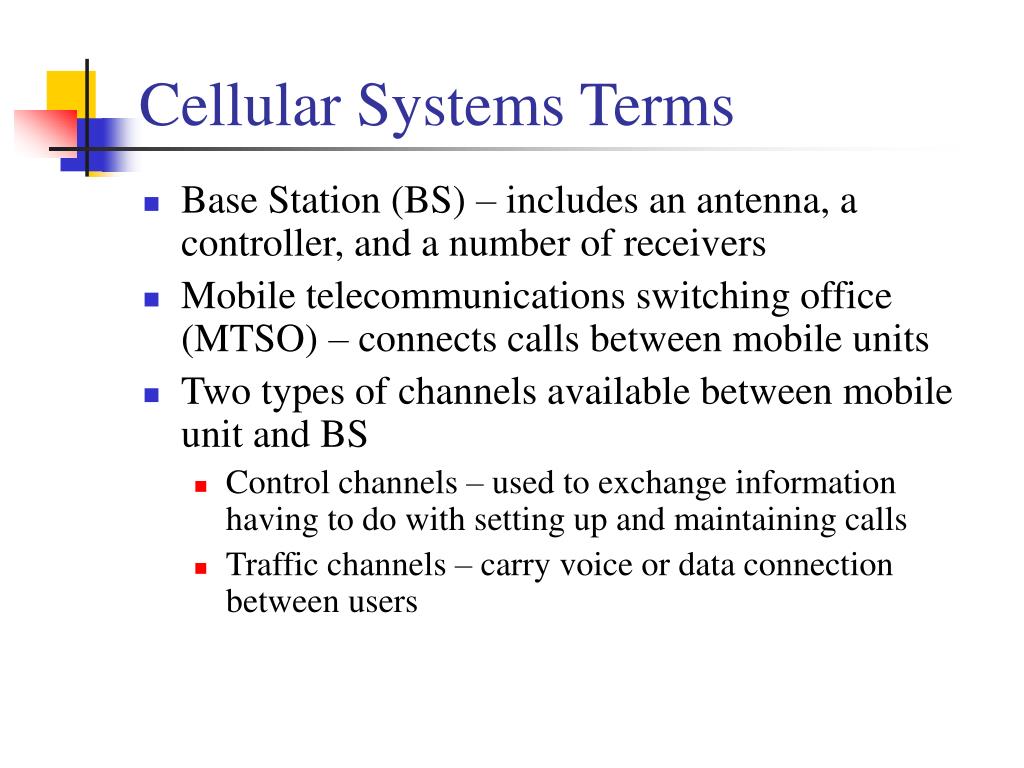
In a group of 7 cells, available frequency spectrum is consumed totally. Total available frequency resources are divided into seven parts, each part consisting of a number of radio channels and allocated to a cell site. For example, a typical seven-cell pattern can be considered. Each cell can have a base station with a number of RF channels.įrequencies used in a given cell area will be simultaneously reused at a different cell which is geographically separated. Each cell can cover a limited number of mobile subscribers within its boundaries. In a cellular network, total area is subdivided into smaller areas called “cells”. With limited frequency resource, cellular principle can serve thousands of subscribers at an affordable cost. Then number of RF channels required are − Radius(km)įor 10,000 subs to allot 360 radio channels we need a B/Wof 360 × 50 KHz = 18 MHz.

ExampleĬonsider a subs density of 30Sq.Km., Grade of service as 1%, Traffic offered per mobile sub as 30m E. Even then the number of RF channels required to serve the subscribers, works out to be impracticable. This can be achieved by using multiple access methods FDMA, TDMA, or CDMA.

To overcome this B/W problem, subscribers have to share the RF channels on need basis, instead of dedicated RF loops. ExampleĪ single RF loop requires 50 kHz B/W then for one lakh subscribers we need 1,00,000 x 50 kHz = 5 GHz. If we use dedicated RF loop for every subscriber, we need larger bandwidth to serve even a limited number of subsc in a single city. But this restriction has been removed with the advent of the cellular radio.

The immense potential of conventional telephone cannot be exploited to its maximum due to the limitation imposed by the connecting wires.


 0 kommentar(er)
0 kommentar(er)
